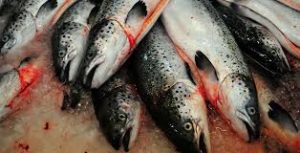Food safety training is like psychotherapy: Sure, I understand the theory, the neural pathways, the addictive brain, but will that change my behavior (shurley not).
But there’s always hope – in place of well-designed studies that measure success, failure, and actual experiments with novel approaches. Most studies get tossed on the rhetorical pile of we-need-more-education crap.
Here’s the abstracts for two recent papers:
Effectiveness of food handler training and education interventions: A systematic review and analysis
Journal of Food Protection vol. 82 no. 10
Ian Young, Judy Greig, Barbara J. Wilhelm, and Lisa A. Waddell
https://doi.org/10.4315/0362-028X.JFP-19-108
https://jfoodprotection.org/doi/abs/10.4315/0362-028X.JFP-19-108
Improper food handling among those working in retail and food service settings is a frequent contributor to foodborne illness outbreaks. Food safety training and education interventions are important strategies to improve the behaviors and behavioral precursors (e.g., knowledge and attitudes) of food handlers in these settings.
We conducted a comprehensive systematic review to identify, characterize, and synthesize global studies in this area to determine the overall effectiveness of these interventions. The review focused on experimental studies with an independent control group. Review methods included structured search strategy, relevance screening of identified abstracts, characterization of relevant articles, risk of bias assessment, data extraction, meta-analysis of intervention effectiveness for four outcome categories (attitudes, knowledge, behavior, and food premise inspection scores), and a quality of evidence assessment.
We identified 18 relevant randomized controlled trials (RCTs) and 29 nonrandomized trials. Among RCTs, 25 (64%) unique outcomes were rated as high risk of bias, primarily owing to concerns about outcome measurement methods, while 45 (98%) nonrandomized trial outcomes were rated as serious risk of bias, primarily because of concerns about confounding bias. High confidence was identified for the effect of training and education interventions to improve food handler knowledge outcomes in eight RCT studies (standardized mean difference = 0.92; 95% confidence interval: 0.03, 1.81; I2 = 86%). For all other outcomes, no significant effect was identified. In contrast, nonrandomized trials identified a statistically significant positive intervention effect for all outcome types, but confidence in these findings was very low due to possible confounding and other biases.
Results indicate that food safety training and education interventions are effective to improve food handler knowledge, but more evidence is needed on strategies to improve behavior change.
Gaps and common misconceptions in public’s food safety knowledge
British Columbia Institute of Technology
Kathy Kim, Helen Heacock
https://pdfs.semanticscholar.org/b78e/7eb080d0fe5a95f95e0b140ca183277c81cb.pdf
Background: Incidence rates of some foodborne illnesses (FBIs) in BC still remain on the rise despite numerous initiatives to prevent FBIs. This rise over the years has been attributed to gaps in the public’s food-safety knowledge and practices. In order to decrease incidence rates and prevent future FBIs, efforts should be made to identify common misconceptions in the public’s food safety knowledge. With a focus on the Metro Vancouver population, common misconceptions in food safety were found and their knowledge level towards the misconceptions was analyzed.
Methods: An in-person survey was conducted in three locations in Metro Vancouver. The survey asked for demographics information, perceived food safety knowledge and food safety misconceptions. ANOVA and Independent Sample T-test were administered to analyze results.
Results: No statistically significant difference in food safety knowledge was found between groups by gender, age, and geographic region. The majority of participants rated their food safety knowledge as moderate but they demonstrated a poor knowledge level in food safety.
Conclusion: The public’s knowledge level should be improved to prevent further rises of FBIs. Initiatives involving the provincial Foodsafe certification program, secondary school curriculums and health authority websites can be utilized to educate the public.










